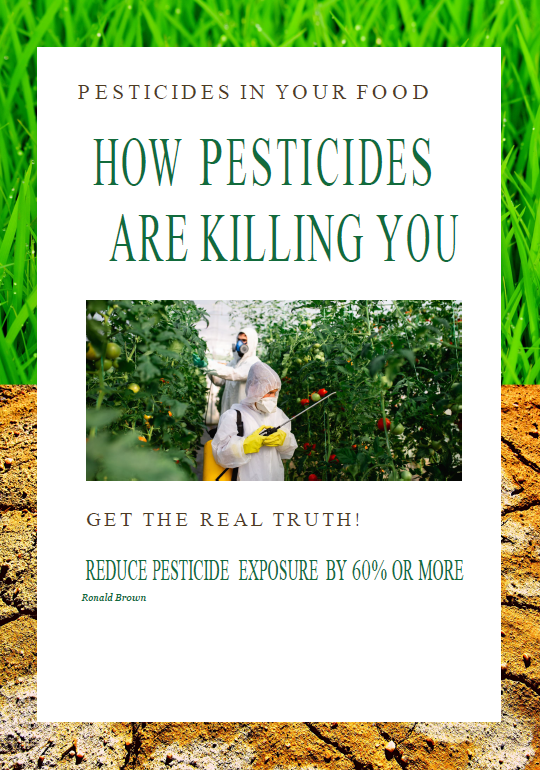
Table of Content
What Are Pesticides And Why Should It Concern You
How Pesticides Have Transformed
The Deadly Effects of Pesticides
7 Major Health Side-Effects of Pesticides
7 Environmental Effects of Pesticides
What is allowed in Organic Foods
How To Minimize Your Exposure To Pesticides
Choose Organically Grown Foods
Avoiding Non-organic Meat And Dairy
Stay Away from the “Dirty Dozen”
Finding an Organic Farmer In Your Neighborhood
Introduction
Synthetic Pesticides are used in and on just about all of our produce and meats we consume. You would think it would be safe! Sadly that is not the case.
Summary
We will show you: What pesticides are really in your food? Are there any safe foods for you? Which ones are most dangerous to you and the environment? How can you minimize your exposure? What’s allowed in organic food? How to know you are buying organic produce? How to test your water? How to find and know you have a real local organic farmer?
The first synthetic pesticides were used in WWII as mustard gas and on the forest of Vietnam during the Vietnam War to control bugs and destroy the foliage in the jungle. These pesticides were designed to kill. After WWII there where two major companies that was allowed by the Dept. of Agriculture and EPA to sale new versions of these toxic pesticides to farmers.
My question to you is how does a company that makes lethal pesticides become the leading seller of safe eco-friendly pesticides for our animals and our food?
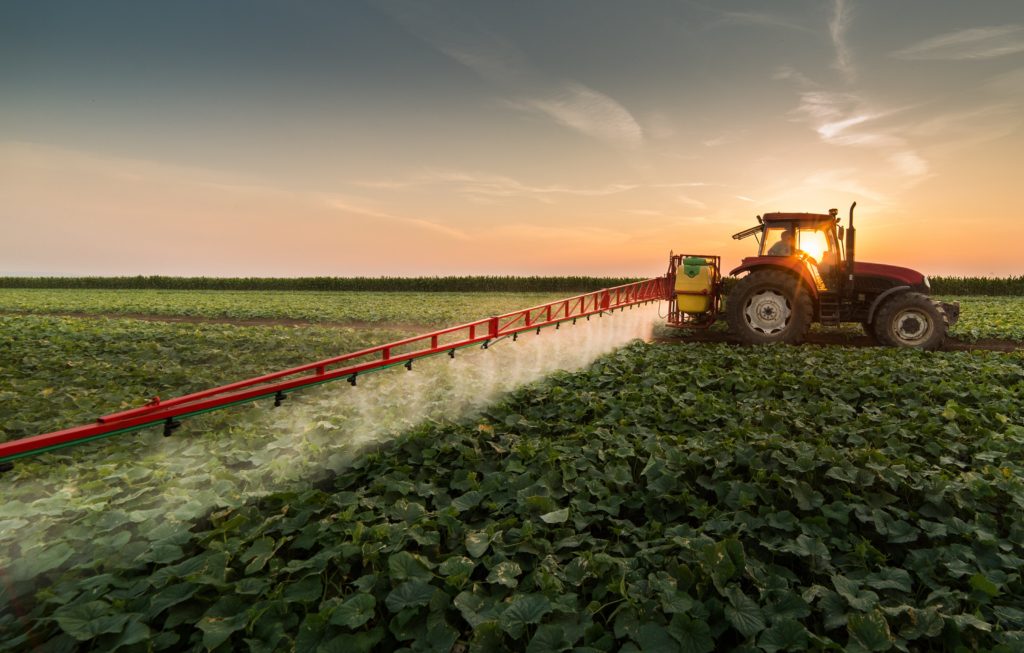
Your nightly routine is here, dinner time! You have to prepare a nutritious meal for your family this evening; you decide to make them your favorite dish tonight! Here you go! At your local supermarket you see various produce and meat selections. Selecting “the best looking” produce, spices, sprouts, and meat is a fun, challenge. You, then rush home to prepare your special meal! At the same time you’re eating dinner- you hear a train, off in the near distance. The train is a little over a mile (5280feet) long. This is a normal sound to hear throughout the night in your area. But tonight -and believe it or not-quite often- this train traveling in your town is hauling the most Toxic Pesticides you could ever imagine- in concentrated form! Each train car weighs over 150,000 pounds. Half of that trains cargo is filled with this toxic pesticide headed to local, pesticide distributors NEAR YOU. You have seen or maybe even glanced at the evacuation plan for your town, and now-what would happen if the train really crashed.
You know something is not right with these pesticides but it can’t be that bad. So you decide to go for a walk.
Walking through your suburban neighborhood you see neighbors watering their lawn with weed killer, spraying insecticide, and spreading bug killer. You are beginning to see that these pesticides are all around you. You decide to go visit your local large farm 50 acres. You see planes and tractors spreading, dusting, spraying crops, and livestock with liquid and powered herbicides, fungicides, neurotoxins, and disinfectants.
You would think that with such widespread use of it would be completely safe, right? Stop for a second!
Just think this stuff is in and on just about all the produce and meats we eat.
So what are pesticides and why it should concern you? How the use of them affects you even if you don’t use them? One of the most important things we will show you is how to minimize your exposure to pesticides by 60%
What Are Pesticides And Why It Should Concern You
Pesticides are chemicals that are used to kill all types of “pests” that are, living creatures. Because of this, some people consider it “biocides” since they don’t just kill pests; they kill all types of living things. Most of them target specific rodents, insects, bacteria, algae, and weeds that compete for food that is meant for human consumption. They are used mainly in agriculture and home gardening but are also used in forests to control pest and foliage.
Here are some of the main types of pesticides:
Insecticides are a type of pesticide that is used to specifically repel and kill insects. Some will attack the nervous system and exoskeleton.
Fungicides target damaging fungi, like mold, rust, and mildew that causes plants to die. Pesticide companies designed fungicides to disrupt cell energy production or destroy the cell membrane.
Herbicides are used to kill and/or prevent weeds or unwanted plant growth. Most of them will kill any plant indiscriminately unless genetically engineered to resist. Disinfectants are used to control/kill viruses and bacteria. Most people have used some form of disinfectants to clean the kitchen and bathrooms. They remove germs from surfaces like counter-tops and walls.
Disinfectants are used to control/kill viruses and bacteria. Most people have used some form of disinfectants to clean the kitchen and bathrooms. They remove germs from surfaces like counter-tops and walls.

Where is Pesticides Found
Pesticides are found everywhere. According to the World Health Organization, there are over 1000 types of pesticides. But the crazy thing is according to the National Institutes of Health 1.8 Billion people worldwide work in the agriculture industries and most of them are exposed to several types of pesticides on a daily bases. There are over 1 Billion pounds of pesticides used in the U.S. today. Pesticides are used on cropland and cattle so all the residue runs into all our rivers, streams, lakes, and oceans.
Outside of the agriculture industries, it is also found in everything you do. The water that you shower with, the food that you eat, the lake you swim in, and I mean just about everything even the air you breathe.
This is why it is so clear now than ever before that we humans are NOT connected with the environment and it is our responsibility to work with Mother Nature by simply doing what she does to create a sustainable life.

How Pesticides Have Transformed
The pesticide practices in the 15th century in Europe were dangerous with the discovery of arsenic, mercury, and lead. These toxic elements became their pest control. Most pesticides were arsenic-based up until the 1940s-1950s. The irony of the whole thing is that the very first synthetic pesticides were created by the military in the
1940s-1950s.
These pesticides were used in WWII and the Vietnam War. The pesticides are mainly as known as Agent Orange but there is a rainbow of colors. Agents like Green, Pink, Blue, Purple, White, Orange 1, 2, and Super Orange. They are called the “Rainbow Herbicides” by its creators Dow Chemicals, Hercules Inc. and Monsanto’s.
These companies’ first creation in the world of synthetic pesticides was toxic pesticides for war, destruction, and killing. How do they become the number 1 pesticide providers for Agriculture Industry around the world? (Responsible For Growing All Things Living.)
There are many detrimental effects to most WWII and Vietnam Vets. Many Veterans have developed one of many illnesses as a result of being exposed to these agents. Illnesses like Prostate Cancer, Respiratory Cancers, Parkinson’s Disease, Diabetes Mellitus Type 2, and Hodgkin’s Disease just to name a few. One of the more surprising thing I found was that 33% of the Vets kids are more likely to be born with birth defects, because of the veterans has been exposed to “Rainbow Herbicides”.

What Are GMOs
Genetically Modified Organism is an organism who’s DNA/genetic material has been altered using genetic engineering techniques. Now, these companies have gone from using different combinations of synthetic material to make toxic pesticides to now altering the genetic code of organisms to include pesticides in the organism DNA.
Does this make sense to you?
With corn being one of the major US. Crops it was 1 of the first to be grown using this technique and the insecticide that is used is Bacillus thuringiensis (Bt). It explodes the stomachs of the insects that eat it, so what is it doing to your stomach. Your body does not know how to handle this because it has never had to deal with this toxic pesticide being a part of the DNA of the corn you are eating. Making it difficult if not impossible for your digestive system to extract healthy nutrients without also extracting poisonous pesticide.
The other major GMO Crops are made to absorb toxic herbicides easily. As a result, the bugs and weeds are becoming more pesticide-resistant so you have to use more next time. United States used 11 million pounds of glyphosate in 1987 to nearly 300 million pounds today Newsweek Reports.

The Most Used Pesticides
Carbaryl
Carbaryl is an insecticide that controls over 100 species of insects on plants, trees, fruits, lawns, and livestock. Carbaryl works when insects ingest in their stomachs or come in contact with the pesticide. Inhalation affects the lungs. Nerve damage can occur after 50 days of high dosages in rats which are known as mitosis (cell division) or damaging DNA. It has Mutagenic Effects.
Glyphosate
Glyphosate is one of the most popular herbicides used in the US. today. It has made mainstream news because of all of the lawsuits. It is a creation of Monsanto’s-Bayer which has over 10,000 cancer lawsuits. It is used mainly in commercial agriculture
and homeowners. Other countries have sense enough to ban the product or heavily restrict its use. Countries like Austria, Europe, Asia, Latin America.
Trichlorfon
Cornell’s Studies show that and I Quote:
“Trichlorfon is an organophosphate insecticide used to control cockroaches, crickets, silverfish, bedbugs, fleas, cattle grubs, flies, ticks, leafminers, and leaf-hoppers. It is applied to vegetable, fruit and field crops; livestock; ornamental and forestry plantings; in agricultural premises and domestic settings; in greenhouses, and for control of parasites of fish in designated aquatic environments. It is also used for treating domestic animals for control of internal parasites.”
“Trichlorfon is a selective insecticide, meaning that it kills selected insects, but spares many or most other organisms. Trichlorfon is toxic to target insects through direct applications and by ingestion. Trichlorfon is one of a family of insecticides referred to as organophosphates. These chemicals act by interfering with an essential nervous system enzyme, cholinesterase.”
This product is so dangerous that if you are not wearing a complete hazmat suit and respirator mask you can have respiratory problems immediately. It can be absorbed through your skin. This stuff is extremely dangerous.
Chlorpyrifos
Chlorpyrifos is an insecticide, it is a chemical used to kill a broad spectrum of insects. It was introduced to the market in 1965 asa mosquito killer in the immature, larval stage of the development. It is effective against all types of insects including grubs, flies, termites, fire ants, rootworms. It is registered for direct use on sheep, turkey, dog kennels and much more. Because the EPA hasfound high levels of Chlorpyrifos in the US. water the product is under review until 2022 in the United States. Chlorpyrifos is banned in the EU. Getting Poisoned from chlorpyrifos may affect the central nervous system, the cardiovascular system, and the respiratory system.
A nerve gas!!
Again, why do we have companies that its first creation of a synthetic pesticide which was for the military to destroy creatures and plants? Again I have to ask you, does that make sense to you?
Controlling insects does not mean that you have to always use poison to kill them.
Ziram
Ziram is a fungicide that is primarily used on almonds and stone fruits. It is usually applied to the foliage and/or the soil. People have developed nerve and visual disturbances from prolonged inhalation of ziram. Ziram can damage your eyes to the point where it is irreversible because it is corrosive to the eyes.
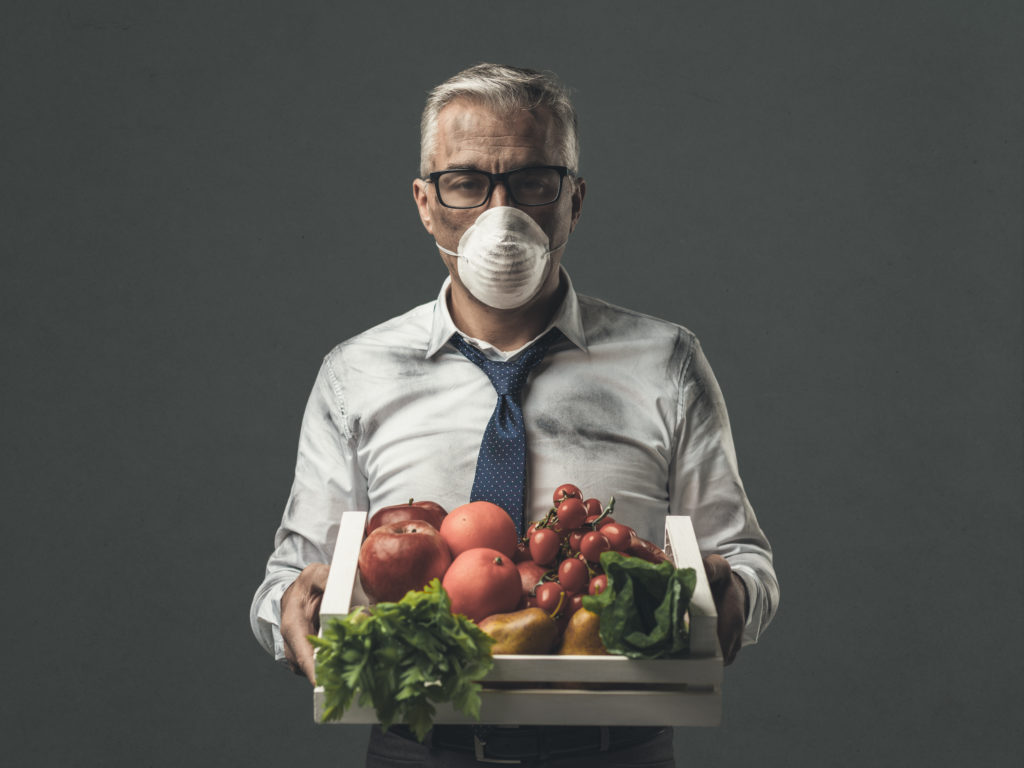
The Deadly Effects of Pesticides
Pesticides are designed to kill living creatures immediately and we are living creatures as well so what affects them usually affects us in some way. Because there are over 1 billion pounds of pesticides used in the US, people are being exposed to more than 2 pesticides at 1 time. UCLA Sustainable Technology & Policy Program showed in 2016 that simultaneous exposure to drift-prone toxic pesticides (1,3-D, chloropicrin, chlorpyrifos, and metam sodium) is a significantly greater risk than any individual toxin.
These pesticides are causing all types of severe health issues and we are being exposed to them everywhere we turn.
The military is only necessary When 2 countries cannot agree on a thing. They are in the business of taking territory by force not creating pesticides to help grow our food. Killing creatures is not the only way to get rids of pests. Sometimes just repelling pest is good enough.
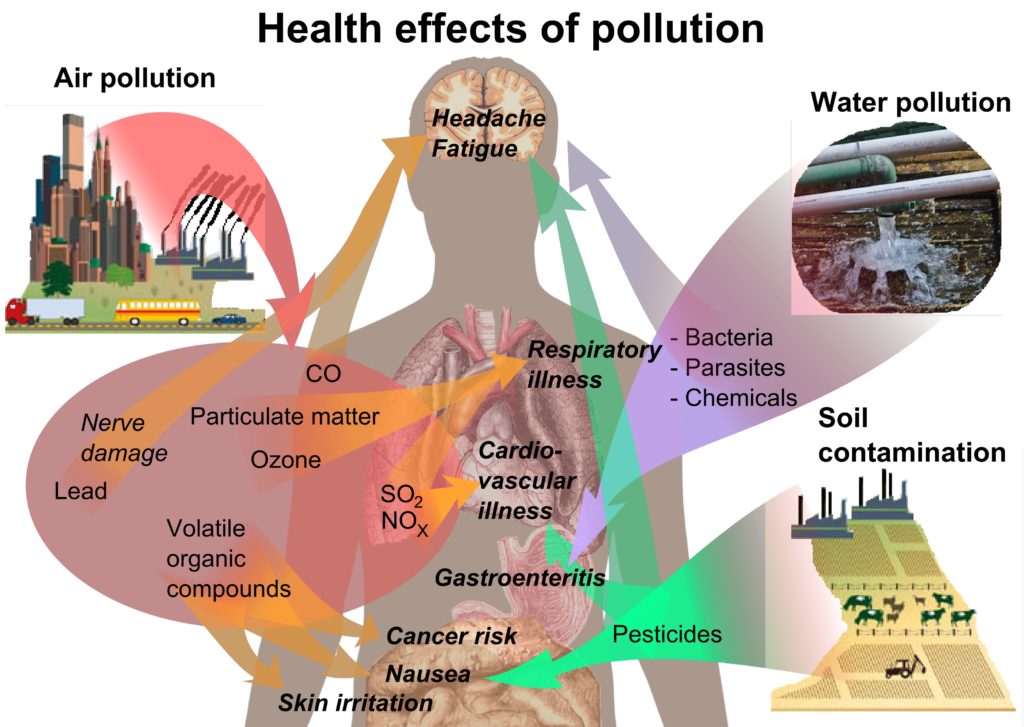
7 Major Health Side-Effects of Pesticides
Long-term Effects
Decades of research shows there is a known severe side-effect of long-term exposure to certain Pesticides.
Here is a list of known effects long-term:
Cancer
Studies have shown that not only can these chemicals put you at greater risk to get cancer they can cause cancer themselves. Because most pesticides still contain arsenic in them, which is a human carcinogen, they promote tumor growth. Pesticides like organochlorines, creosote, and sulfamate are carcinogenic, while DDT, chlordane, and lindane to name a few.
Neurological
One of the main pesticides that increase the risk of, and potentially causing neurological
Issues are Organophosphate.
“Organophosphate pesticides (OPPs), like some nerve agents, inhibit this neuromuscular enzyme, which is broadly essential for normal function in insects, but also in humans and many other animals. The brain sends out neurotransmitters to the nerve endings in the body; organophosphates disrupt this process from occurring. This chemical, organophosphate works by disrupting the enzyme acetylcholinesterase. Acetylcholinesterase break down the acetylcholine neurotransmitter, which sends out signals to other nerve endings in the body”
Reproductive effects
Altered fetal growths, birth defects, and fetal death have shown a strong link to pesticide exposure.
“Agent Orange, a 50:50 mixture of 2,4,5-T and 2,4-D, has been associated with bad health and genetic effects in Malaya and vietnam. It was also found that offspring that were at some point exposed to pesticides had a low birth weight and had developmental defects.”
Respiratory System
“A 2013 review published in the International Journal of Environmental Research and Public Health found that people who use pesticides regularly as part of their job have been shown to have a higher risk of developing breathing problems includingimpaired lung function, asthma, and chronic bronchitis. There is also some evidence of an association between pesticides and lung cancer.”
Fertility Prenatal and childhood exposure to pesticides is at an alerting rate according to the National Institutes of Health.
“Several pesticides including dibromochlorophane and 2,4-D have been associated with impaired fertility in males. Pesticide exposure resulted in reduced fertility in males, genetic alterations in sperm, a reduced sperm count, damage to germinalepithelium and altered hormone function.”
Autism During Pregnancy
“A 2019 study in 2,961 people with diagnosed autism spectrum disorders found that risk for autism increased from exposure to surrounding pesticides within a 1¼ mile radius of where the mother lived while pregnant. These babies were compared to those of women within the same agricultural region without this exposure. Researchers concluded that infant exposure to pesticides during gestation could increase autism risk. Other studies tell us that mothers living close to fields treated with pesticides are more likely to have premature babies and children with autism, impaired cognitive function, and other neurodevelopmental disorders.”
Other People
who used these pesticides on regular bases are 62% more likely to experience kidney damage or kidney failure according to a review in 2017 in Environmental Health.
“Summaries of peer-reviewed research have examined the link between pesticide exposure and neurologic outcomes and cancer, perhaps the two most significant things resulting in organophosphate-exposed workers. According to researchers from the National Institutes of Health (NIH), licensed pesticide applicators that used chlorinated pesticides for more than 100 days in their lifetime were at greater risk of diabetes. One study found that associations between specific pesticides and incident diabetes ranged from 20% percent to a 200% percent increase in risk.”
Short-term Effects
This is a graph of exposure level signs. These signs you will recognize immediately if you have been poisoned.
| Table General Symptoms that Might Indicate Pesticide Poisoning |
||
| Mild Poisoning | Moderate Poisoning | Severe Poisoning |
|
Any of the following:
|
Any of the mild symptoms, plus any of the following:
|
Any of the mild or moderate symptoms, plus any of the following:
|
At this time, call the National Poison Center at 1-800-222-1222 for guidance on the proper response to your symptoms. This number will direct your call to the nearest poison center, which is staffed on a 24-hour basis.
The health impact of pesticides has been researched for several decades and has shown that there is a detrimental link between long term use of any of these pesticides and human health.
7 Environmental Effects of Pesticides
- They poison the water supply.
The water supply of every town is being contaminated by water run-off from conventional farms, pesticides spills, toxic pesticides manufacturer, and lawn care just to name a few.
With all of the run off from farm
- They contaminate the air.
The air is poisoned by the crop dusting and land dusting which allows the toxic particles to become airborne.
- They destroy soil and its nutritional content.
Some of these pesticides do not breakdown in the soil well so the toxic is being tilled deeper in the soil the next year and destroys the soil for years to come. Each year farms are needing more pesticides because the pest and weeds are building resistance to the pesticide. So that now some farms are toxic land fields that you should not walk on.
- They contaminate the food.
You will find all types of pesticides on all conventional farms and some organic farms if you are not careful.
- They throw off the essential ecosystems.
The pesticides is meant to kill pests which are a part of the ecosystems it self. Because of this one thing alone it is destroying the ecosystems. Our top pollinators Bees are being killed by the millions.
- They’re poisoning the ocean
Toxic pesticides are concentrating in certain areas in the ocean because of ocean currents and manufactures locations. They kill several varieties of fish, coral, seaweed, and kelp totally disrupting the oceans ecosystem
- They can be absolutely toxic to anyone working with them every day

How To Minimize Your Exposure To Toxic Pesticides
Looking at the evidence that we have today we can see that using a small number of toxic pesticides can have a compound effect on humans and animals. The wonderful thing is that we can limit our exposure to harmful pesticides significantly.
What Pesticides Are Allowed In Organic Foods
These are the pesticides allowed in US. Certified Organic program:
List of major substances:
Bacillus subtilis Bacilus thuringiensis Beauveria bassiana
Boric acid: Structural pest control, no direct contact with organic food or crops. Coniothyrium minitans
Copper:Copper hydroxide, copper oxide, copper oxychloride, includes products exempted from EPA tolerance, provided that copper-based materials must be used in a manner that minimizes accumulation in the soil and shall not be used as herbicides.
Copper sulfate: Application rates are limited to levels which do not increase baseline soil test values for copper over a timeframe agreed upon by the producer and accredited certifying agent.
Corn gluten
Cydia pomonella granulosis Diatomaceous earth Gibberellic acid
Horticultural vinegar
Hydrogen peroxide
Lime sulfer: Including calcium polysulfide
Minerals such as elemental sulfur, bicarbonate, or kaolin clay
Myrothecium verrucaria
Non-detergent insecticidal soaps: As a pesticide, fungicide, or algaecide for food crops
Oils, including petroleum, vegetable, and fish oils: Types include dormant, suffocating, and summer oils

Choose Organically Grown Foods
Because conventional farmer is allowed to use over 900 synthetic pesticides it is wise to choose organically grown food whenever possible because they are only allowed to use 25 pesticides started at the of 2018.
A study was performed in 2019 that shows a 60% reduction in pesticide intake for families that just eat organic for 6 days. How to know if your produce is organic by a look at the Product-Look Up Number (PLU) or the bar codes on your produce in your local supermarket by reading PLU’s.
Reading PLU’s
Using Price Look-up Codes (PLUs), the Nutshell:
PLU codes are four digit numbers that identify different types of produce. For example, #4011 is the code for a organic green bellpepper. The number 9 prefix added to a PLU signifies that an item is organic.
For example, #94011 is the code for an organic green bell pepper. A number 8 prefix added to a PLU signifies that an item is genetically engineered (GE). For example, #84011 is the code for a genetically engineered green bellpepper.
PLU codes and their organic prefixes are in wide use but GE codes are rare at best.
How To Pick The Best Organic Foods-Avoiding Non-organic Meat And Dairy
The animal’s environment and its feed contain pesticide residues which mean pesticides have been found in most seafood, milk, meats, and eggs. 83% of the farmlands get used for agriculture animals. Considering that the animals occupy the farm and are eating the feed they are being exposed to pesticides several times a day. It is in their water, food, and the air when it is being sprayed.

Stay Away from the “Dirty Dozen”
The “Dirty Dozen” is published every year by Environmental Working Group (EWG) which lists the vegetable with the most amounts and least amount of pesticides. They are called the “Dirty Dozen” and the “Clean15“.
Finding an Organic Farmer in your neighborhood
Essentially one of the best things to do is find your local organic farmer. Build a relationship with them and see what type of pesticide practices they have. Here is a list of great resources to find a local organic farmer in the United States.
Find Your Local Organic Farm (database) –U.S. Department of Agriculture (USDA)
How To Remove Pesticides From Your Vegetable And Fruit
Questions To Ask Your Local Organic Farmer
Take your list above with the approved pesticide for organic farming with you so you know which products are bad. Let the farmer know you are truly looking for the best organic food possible for your family. If you think that pesticides have led to issues you have and/or a family member has. Let the farmer know you are trying to test that theory and you have a few questions for him.
Adequate Filtration–The Farmer Should Have
Minimally
You are looking for at least 1 chemical pesticide, bacteria, and virus removal filter plus a main inline large scrubber filter.
Ideal Water
The farmer needs 2 chemical pesticides, bacteria, and virus removal filters plus a main inline large scrubber filter.
Great Water
The farmer needs 2 chemical pesticides, bacteria, and virus removal filter plus a main inline large scrubber filter. 1 Inline Ultra Violet Ray Filter (UV Filter) which kills 99% of bacteria and viruses in the water.
If the farm has good water and good pesticide practices then that just might be your farmer. If the farmer has time have him or her to take you on a tour. If farmer has no time ask, if it is OK if you take a tour.
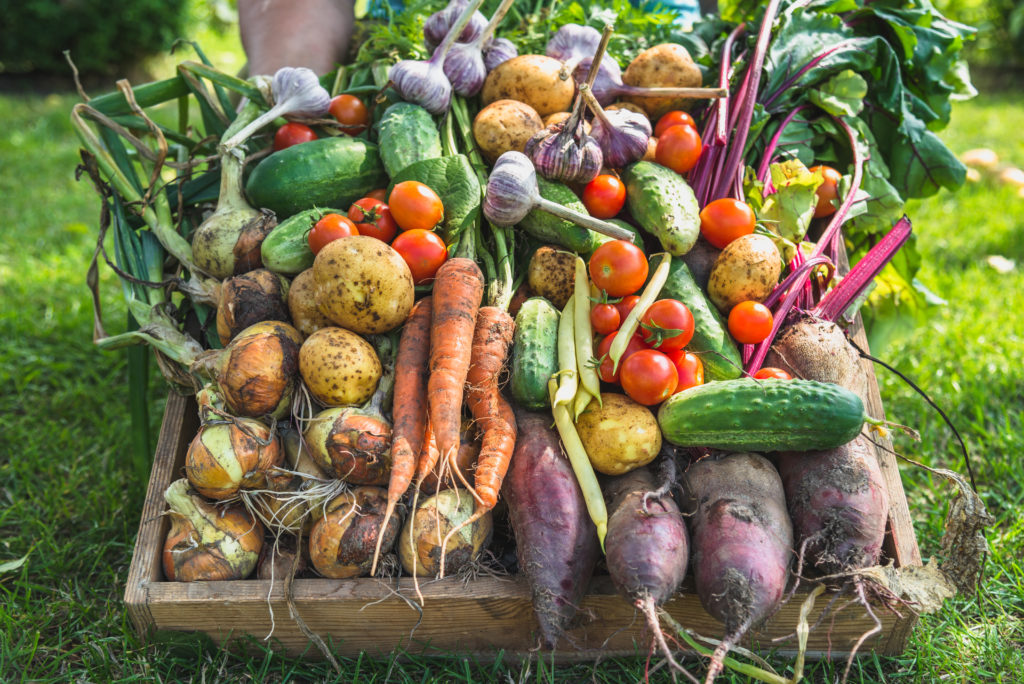
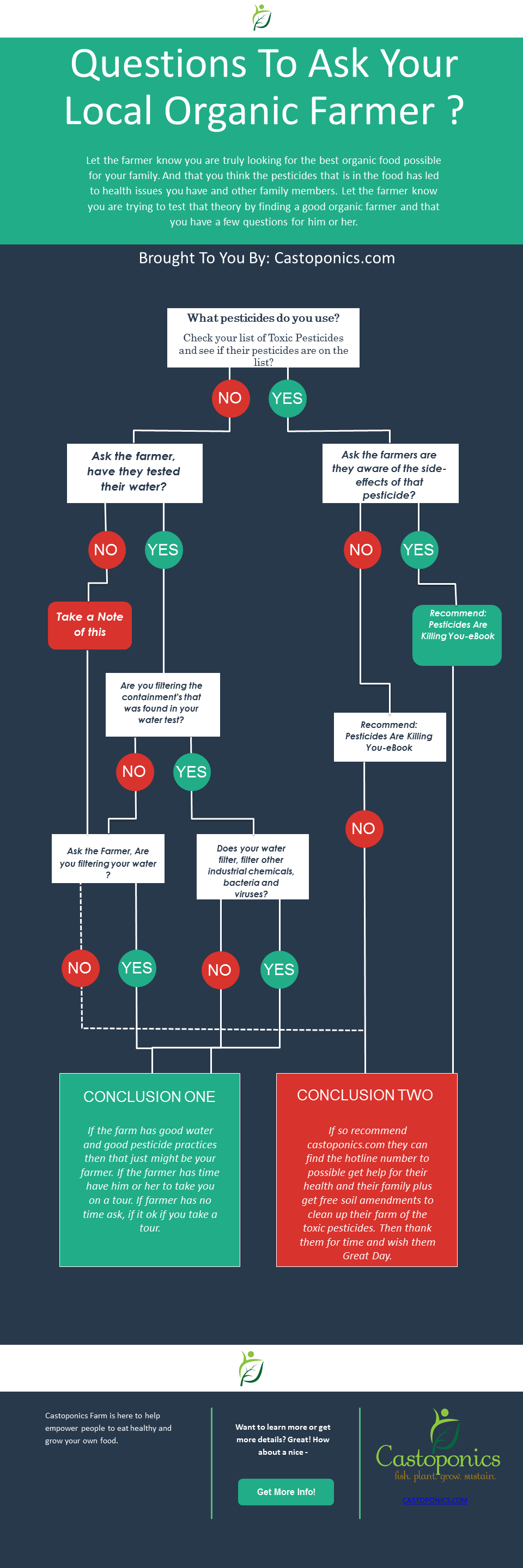
Cleaning Your Home Water
One of the best things you can do for your family is getting a good whole house water filter and a drinking water filter with UV filter. Buying bottled water is not always the best. Most bottled water is in plastic and we don’t know how well it was filtered and how long it has been in the plastic or glass bottle for that matter. You come out better filtering your water in the long run in cost and health.

Water Testing Using Sprouts
One of the ways we test our well water against bottled water is simply by growing the same certified organic sprout seeds from the same bag into 2 different sprout jars. 1 using our triple filtered and UV filter against all types of store-bought water. Surprisingly what we have found is that in our area the distilled water outperforms Spring Water and filter water from the store. Spring water tends to have a lot of bacteria and spoils sprout seeds more frequent than the rest.
If you think you got good water then test it. If it will not grow sprouts and they rot in 3-5 days you have bad water. With method we use you very rarely have certified organic seeds that have large amount of bacteria in the seeds because of . We recommend soaking seeds in very small amount of oral hydrogen peroxide
So what is this water doing to you?
